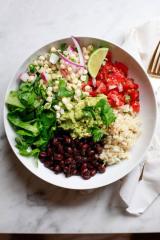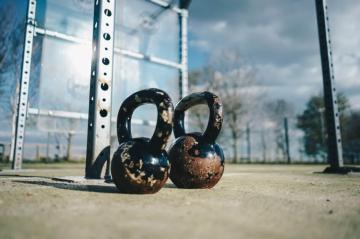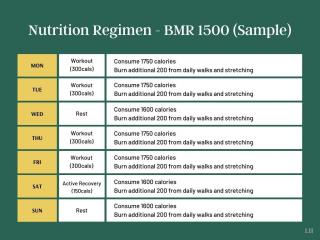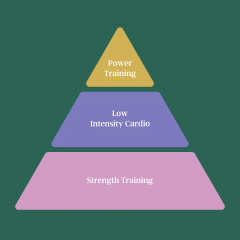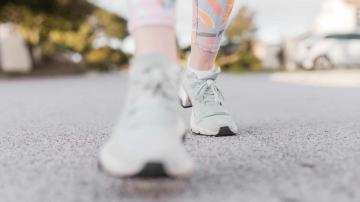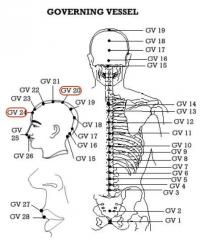Being physically active has been shown to have many health benefits, both physically and mentally. It may even help you live longer. Additionally, exercise can increase the production of endorphins, which are known to help produce positive feelings, reduce the perception of pain, and lower stress levels.
Studies suggest people who are 19–64 years of age should aim to get 150 minutes of moderate aerobic activity each week. Interestingly, it doesn’t matter how intense your workout is. It seems that exercise can benefit you no matter the intensity of physical activity.
9 Low-Impact Exercises for All Fitness Levels
So, even if you have injuries or any conditions, such as arthritis, you may find it difficult to do high-impact exercises like running and jumping. But there are some great low-impact exercises for all fitness levels that will still give you all the wonderful benefits listed above.
Let’s get started.
1. Swimming
Swimming is an excellent way to work your entire body and your cardiovascular system. An hour of swimming burns almost as many calories as running, without all the impact on your bones and joints. According to Healthline, swimming is the fourth most popular activity in the United States.
Swimming is a suitable exercise for people of all ages. It can help a person get or stay in shape, and the benefits also extend to mental health. In addition to building cardiovascular strength, swimming can help increase lung capacity and improve breathing control.
Swimming engages almost every major muscle group, requiring a person to use their arms, legs, torso, and stomach. It may also help some people elevate their mood, relax, and reduce their stress levels.
2. Walking
Walking can be a great workout; it improves endurance and aerobic capacity while burning calories. Therefore, it is a great low-impact choice for people of all ages and activity levels.
Walking can reduce the risk of developing breast cancer, ease joint pain, boost immune function and counteract the effects of weight-promoting genes as explained by the Harvard Medical School.
The benefits of walking are more than just weight loss. A study from the University of Exeter found that a 15-minute walk can curb chocolate cravings and even reduce the amount of chocolate you eat in stressful situations. Cravings were not only reduced during the walk but also for at least ten minutes afterward.
⌄ Scroll down to continue reading article ⌄
⌄ Scroll down to continue reading article ⌄
3. Cycling
Riding a bike is not just for kids. It just so happens to be a great way to get some exercise without putting too much strain on your joints.
Cycling is great for beginners. It is fairly simple and if you have difficulty with a standard bicycle, stationary bikes are a great alternative.
If you’re new to fitness or bouncing back from an injury or illness, you can cycle at a low intensity and as your health improves, you can increase the intensity or simply continue to cycle at a moderate pace.
Cycling is a fantastic way to raise your heart rate, improve cardiovascular function, and enhance your overall fitness level.
Here are some tips when riding:
Remember that the seat height should allow a slight bend at your knee. You should always wear a helmet. Don’t ride alone. Stick to bike paths instead of riding in the street, if possible. Make sure to wear light-colored or reflective clothing at night and/or have lights on your bike. Stay hydrated before, during, and after your ride. Use sunscreen and wear sunglasses.4. Dancing
Dancing increases cardiovascular endurance because it elevates an individual’s breathing and heart rate. This increase in cardiovascular health can help people enjoy a variety of physical activities today and later in life.
Dancing also builds muscular strength. Each dance move requires a dancer to support their body weight as they navigate the dance floor. Like all body-weight exercises, these movements trigger muscle growth. Dance can help strengthen smaller muscles that are often neglected by more high-impact activities like running and aerobics.
Anyone can dance. All you need is some music, and you can make up the moves as you go! Just have fun with it.
5. Low-Impact Circuit Training
Circuit training is an excellent way to build strength and improve your overall health and wellbeing.
Low-impact circuit training improves cardiovascular health but is also easy on the joints. It is a circuit-style aerobic routine with each move performed for about one minute with little to no rest between exercises.
⌄ Scroll down to continue reading article ⌄
⌄ Scroll down to continue reading article ⌄
Though circuit training is generally safe, if you feel pain or discomfort when doing a specific movement, skip over it and move on to the next exercise. If the pain or discomfort persists, stop the workout and seek medical treatment.
Always be sure to perform a proper warm-up and cool down for your circuit workouts. Warm-up/Cool down for five minutes with light cardio, such as walking or toe taps, to prepare your body for the exercises.
This five-move circuit can be performed with a single set of light dumbbells or resistance bands. This circuit prioritizes compound, full-body moves to give you the best full-body workout.
To complete it, perform 12 reps of each exercise, rest for 30 seconds, and then repeat the circuit for a total of two to three rounds.
Squat to shoulder press Side lunge to triceps kickback (6 on each side) Reverse lunge to biceps curl (6 on each side) Bent-over dumbbell row Chest press6. Pilates
Pilates is an exercise system that focuses on core muscles in the body that help with balance and keeping the spine in alignment. Because it is a gentle program, pilates is a great exercise system for any fitness level.
The exercises are usually done in a specific order, one right after another. The movements have names like “The 100,” “Criss-Cross,” the “Elephant,” and the “Swan.”
The moves may look simple, but they take a lot of precision and control.
The pilates technique prioritizes quality over quantity. Unlike other systems of exercise, pilates exercises do not include a lot of repetitions for each move. Perform each exercise with precision and focus on your breath and you can achieve significant results in a shorter amount of time.
Pilates can be done either in a class or at home using a DVD. You’ll get stronger, more sculpted muscles, and gain flexibility. You may also have better posture and a better sense of well-being.
7. Rollerblading
Rollerblading, otherwise known as inline skating, is a type of low-impact aerobic exercise that can be a beneficial alternative to high-impact activities like jogging.
⌄ Scroll down to continue reading article ⌄
⌄ Scroll down to continue reading article ⌄
Rollerblading is ideal for increasing endurance, building muscle, burning fat, improving speed, balance, and coordination, and helping you lose weight.
Learning to rollerblade is like learning to ride a bike. It gives you a sense of accomplishment and an increase in self-confidence, which is not only great for kids but adults as well.
While rollerblading, you are working your core and lower back muscles, which helps strengthen your balance and coordination skills. If you have kids, teaching your children how to rollerblade at an early age helps develop these skills much like ice skating or skiing do.
To begin, find a moderately smooth path. Rough streets not only feel uncomfortable but can cause harm to your wheels. Sticks and rocks can get lodged in the wheel frame and can immediately constrict movement that will make you fall.
Safety items you may need to get started:
Helmet Wrist guards Elbow and Knee Pads Stay hydrated before, during, and after your ride. Use sunscreen and wear sunglasses.8. Hiking
Hiking is proven to have many health benefits, ranging from physical exercise you get when out on the trail to emotional or mental boosts that come from being in nature.
Hiking is economical and convenient and requires no special equipment. Just a good pair of hiking boots and some sunglasses and you are all set to reap the wonderful benefits of being out in nature.
No matter what type of trail you find yourself on, hiking is a great whole-body workout—from head to toe and everything in between.
The benefits of hiking include building stronger muscles and bones, improving your sense of balance, improving your heart health, and decreasing the risk of certain respiratory problems.
When hiking, you determine the intensity of the workout by choosing your terrain. Whether you find yourself marching up a steep incline or walking down a winding dirt path, hiking is the perfect low-impact exercise for any fitness level.
⌄ Scroll down to continue reading article ⌄
⌄ Scroll down to continue reading article ⌄
9. Tai Chi
I first got introduced to Tai chi in 2020, and I immediately fell in love with it. Often described as meditation in motion, tai chi promotes tranquility through gentle, flowing movements.
Originally developed for self-defense, tai chi has evolved into a graceful form of exercise that’s now used for stress reduction and a variety of other health conditions.
Tai chi is low-impact and puts minimal stress on muscles and joints, making it generally safe for all ages and fitness levels. It may also be especially suitable for older adults who may otherwise not exercise.
According to the National Institute of Health Sciences studies suggested that tai chi done three times a week for 30 to 60 minutes per session for at least three months had a positive impact on some cognitive functions, among many other benefits.
Other benefits of tai chi include:
Decreased stress, anxiety, and depression Improved mood Increased energy and stamina Improved flexibility, balance, and agility Improved muscle strength and definitionAlthough you can rent or buy videos and books about tai chi, consider seeking guidance from a qualified tai chi instructor to learn the proper techniques.
You can find tai chi classes in many communities today. To find a class near you, contact local fitness centers, health clubs, and senior centers.
Bottom Line
No matter your fitness goals, adding low-impact exercises to your routine will help you get there.
I encourage you to always seek approval from your primary care physician before beginning any new fitness routine. Experiment with each of these nine exercises and see what works for you.
Featured photo credit: Brian Matangelo via unsplash.com
⌄ Scroll down to continue reading article ⌄
⌄ Scroll down to continue reading article ⌄


